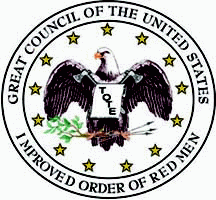
On July 18
th I posted an article titled “The Blue, The Gray and the Green?” referencing the uniform colors of Americas Civil War and I spoke mainly of the Union green uniforms of the United States Sharpshooters commanded by Hiram
Berdan. There were also many other uniform styles during the war and probably the most colorful were those of the
Zouave (zoo’
ahv) soldiers. I had seen many examples of these uniforms over the years but until a little research I was unaware of how extensive the
Zouave concept really was. All told there were more than 50
Zouave units formed during the Civil War with the majority of them belonging to the Union. Although many of the uniforms were similar each unit had its own distinctive style and color scheme. The most common example is with bright red pantaloons, a waist sash, short jackets with an array of gold or red trim and braid and head gear consisting of a turban or fez.

First a little background on the real
Zouaves. The original
Zouaves were from the North African natives of the
Zouaoua Tribe mixed with French settlers and served with the French army in the 1830’s. Their native dress of baggy trousers, short, tight jackets, and fez became the benchmark of the
Zouave uniform and changed little over the years even up to the first world war when the conspicuous uniforms attracted more than their share of enemy ordinance. The bravery and courage of the
Zouaves was legendary and they were the subject of many paintings and illustrations of the era.
Just prior to the Civil War a military enthusiast, Elmer Ellsworth, began the Zouave craze by forming the “United States Zouave Cadets” from a company of the Illinois State Militia. Basically this was a demonstration drill team that performed for the public. Newspapers lauded their performance and it was said that women swooned at the sight of Ellsworth and his band of Cadets. Maintaining this team proved to be expensive and in time it was disbanded however the Zouave craze had begun and Ellsworth was not finished.
At the onset of the Civil War
Ellsworth headed to his home State of New York with the idea of raising the first
Zouave unit to serve the United States in the war. He felt that the bravest of the brave should compose this unit and he promptly began a recruitment of the fireman in New York City. The response was overwhelming and in 48 hours the rolls for the 11
th N.Y. were full. In May of 1861 the Fire
Zouaves were in Washington and ready for action which occurred on the night of May 23. The 11
th entered Alexandria VA. in order to seize the town. Seeing a Confederate flag flying from a local tavern,
Ellsworth entered the establishment to remove the banner from its place of prominence and as he descended the stairs he was shot dead by the tavern owner who in turn was dispatched by a
Zouave corporal that had also entered the building with
Ellsworth.
It seems that many
Zouave units were formed around a common denominator. There were a number of units consisting mostly of fireman as well as units being formed around Irish,

German, or English ethnicity. The 10
th N.Y. National
Zouaves boasted mostly members of the Masonic Fraternity and were nicknamed “
Machesney’s
Zouaves” after their drillmaster.
No less than three
Zouave units fought at the battle of Gettysburg in July of 1863. The 44
th New York Infantry, whose Gettysburg monument is shown at the right, helped defend Little Round Top on the second day of the battle while the 73rd N.Y., also known as the second fire
Zouaves fought in the Peach Orchard.

The 72nd Pennsylvania (composed of Philadelphia Fireman) was in reserve at "The Angle" on the third day of battle but was called up to help repulse Picketts Charge at the stone wall. Their monument on the battlefield is that of a Zouave Soldier using his rifle as a club very close to what is known as “The High Water Mark” where the futile Confederate charge was halted and the tide of the war was turned.
Zouave history is a bit complex due to various enlistment terms of the soldiers, units being decimated in battle and merging with other units and many other issues that arose during the course of the war. “American Civil War Zouaves” is an excellent book by Robin Smith and Bill Younghusband and has a fairly detailed history of the Zouaves. The book contains many photos and drawings and is available from Amazon Books on the web.
A noted Southern Zouave unit was “Wheat’s Tigers” officially know as the 1st Special Battalion Louisiana Infantry. This may well be the subject of a future post as General Roberdeau Wheat has a unique history all his own.



 their magic making confections for the gift shop and the special orders placed for birthday, anniversaries, graduations and other special events.
their magic making confections for the gift shop and the special orders placed for birthday, anniversaries, graduations and other special events.

















